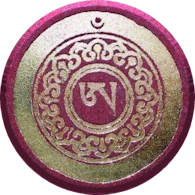
Akong Rinpoché and Samye Ling: Part 1
Early Yet Defining Years,
Settling the Atmosphere
Akong Rinpoché [1] felt neither obliged to, nor inclined to, step into the vacancy created by Trungpa Rinpoché’s departure, first from Samye Ling and then from the UK. He continued in his managerial role and, in the meantime, while setting in motion the processes that would soon bring Tibetan dharma teachers to Scotland, sought well-respected teachers from other Buddhist traditions to visit Samye Ling, primarily to teach meditation and also to teach some dharma.
 The excellent teachers that he found came via the Thai and Burmese viharas near London, through contact made with them via the London Buddhist Society, the focal point for Buddhism at the time. These teachers had come to the UK primarily to teach the Thai and Burmese populations frequenting their viharas and most had little English. Their capacity to teach dharma theory was limited by this; hence the focus on meditation instruction. Via the Buddhist Society, some excellent Zen teachers came, of note in the earlier years the Ven Sochu
Suzuki, founder of the London Zen Society and later to become abbot of the famous Ryutaku-ji monastery in Japan. A list of the teachers invited between 1972-1987 by Samye Ling is on this site as a PDF .
The excellent teachers that he found came via the Thai and Burmese viharas near London, through contact made with them via the London Buddhist Society, the focal point for Buddhism at the time. These teachers had come to the UK primarily to teach the Thai and Burmese populations frequenting their viharas and most had little English. Their capacity to teach dharma theory was limited by this; hence the focus on meditation instruction. Via the Buddhist Society, some excellent Zen teachers came, of note in the earlier years the Ven Sochu
Suzuki, founder of the London Zen Society and later to become abbot of the famous Ryutaku-ji monastery in Japan. A list of the teachers invited between 1972-1987 by Samye Ling is on this site as a PDF .
The visits of these teachers, the courses they gave and the daily prayers (in Tibetan) and silent meditation sessions gradually settled Samye Ling into being somewhat more of a traditionally Buddhist centre than it had been in its first couple of years. Those interested in receiving dharma guidance, as either personal advice or meditation instruction, could see Akong Rinpoché in private interview and/or talk with visiting Tibetans such as Chimé Rinpoché. A number of people in the community remained from the Trungpa years and the committed Buddhists were still in a definite minority, with the majority of the members either subscribing to their own views (spiritualists, theosophists, Gurdjieffians) or bathing in the universalist views of the hippie enlightenment.
Another disturbed area to which Akong Rinpoché gradually brought peace was that of relations with the local community. These had not got off to a good start in many cases. The local community was a highly-conservative one, characteristic of the Protestant communities of rural Scotland. The wild look of many of Samyé Ling’s hippie visitors, the wild behaviour of Trungpa Rinpoché, the seeming “devil-worshipping” going on in the community itself, the naked swimming and so forth had rocked the centuries-old tranquility of the area. Rinpoché realised that this would take some time to heal but found an excellent way of helping the healing accelerate: the annual Tea Party and Open Day.
In his own conversations with the friendlier locals, such as the Cartner family who helped out the centre or the Dalgliesh family that supplied our dairy products, he had realised that a major part of the problem was the mystery surrounding the centre and fear, through not-knowing. The best solution was to open the doors of the establishment, in an annual tea-party. He made a point of inviting in particular the local council members, MPs, doctors and emergency services and trades-people with whom we did business, welcoming them warmly and in person and showing the good things he was trying to achieve, all well-lubricated with tea and home-made sandwiches and cakes. These tea-parties became an institution that continues to this day.
Much later, in a similar vein but rather as a way of showing appreciation and strengthening the positive than of healing wounds, Rinpoché hosted, through the last two decades of his life, an annual invitation to dinner for all those local people who were in one way or another close to him or had been helpful to him. Some were from the immediate Samye Ling community. Others were the Buddhist residents of Eskdalemuir. Others were his local doctor and the like. Whereas the Annual Tea Party became a tradition, invented by him but hosted by the centre, these annual invitations were his personal gesture of gratitude and friendship. Rinpoché was always scrupulously careful about separating what was done for the centre’s benefit from what was his personal work or initiative. He paid for absolutely everything in these dinners from his own pocket and held the meals in his own quarters—the “Conference Centre”—having them cooked by family and friends. The guest list ran into hundreds and the meals took place over many evenings, with about forty people per sitting.
[1] Credit must be given to June Campbell, who already had studied at Sonada, India, with Kalu Rinpoché, for getting people out of the habit of calling him just "Akong" and using instead Akong Rinpoché or just Rinpoché, simply by her example of doing it herself. She was secretary to him in the early days of Samye Ling and, being a very personable young woman, was able to pass this message of respect successfully in the community.
......continue to the next part of the story: Becoming a Married Lama
